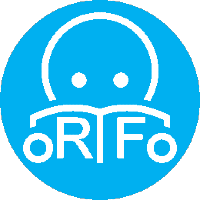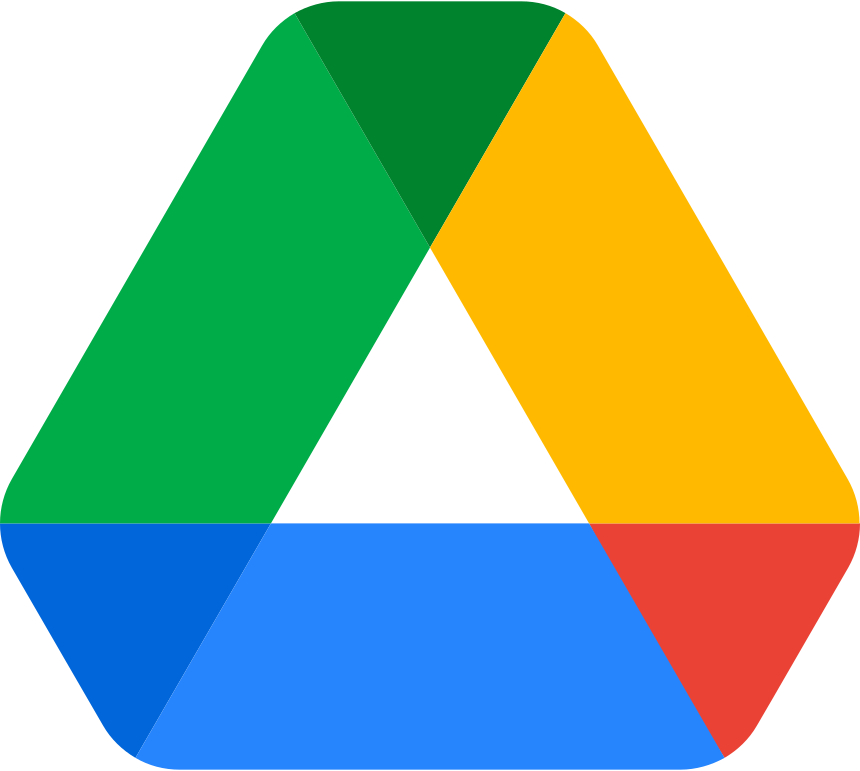ELA-00.L
Narrative for the Language Strand:
As they move through formal schooling, students must gain control over the many conventions of standard English grammar, usage, and mechanics. They must also learn various ways to convey meaning effectively. Language standards include the rules of standard written and spoken English as well as the use of language as craft and informed choice among alternatives. The vocabulary standards focus on understanding words and phrases (their relationships and nuances) and acquiring new academic and domain-specific vocabulary.
English grammar conventions, knowledge of language, and vocabulary extend across reading, writing, speaking, and listening and, in fact, are inseparable from these contexts. As students grow in their understanding of patterns of English grammar, they can use this knowledge to make more purposeful and effective choices in their writing and speaking and more accurate and rich interpretations in their speaking and listening.
Kindergarten students learn to recognizeand write upper and lower case letters and when to use capital letters in writing. Students also learn about basic punctuation marks, how to verbally use singular and plural nouns, and verbs in the past, present and future tense.
How to help your child with the standards in the Language Strand:
- Help your child understand the relationship between letters (upper and lowercase) and sounds by helping them print the alphabet letters.
- Help your child recognize words that start with a capital, and notice the how the begining word of a sentence begins with a capital when reading favorite books.
- Use words like in, out, under, around, on top of, for, by, with........
- Help your child understand that adding -s or -es makes a word plural, and that adding beginnings and endings like -ed and -ing changes the word.
- Encourage your child to sort words into categories like foods, birds, colors
- Show your child opposites like hot/cold, big/small, smile/frown
- Help your child find and use words that have similar meanings like cold/frosty/icy/frigid
- Encourage your child to use new words that he/she hears, adding to his/her vocabulary
Resources
Calculation Method for Strands
Strands are larger groups of related standards. The Strand Grade is a calculation of all the related standards. Click on the standard name below each strand to access the learning targets and proficiency scales for
each strand's related standards. |
|
ELA-00.L.02
 Kindergarten (ELA) Targeted Standard
Kindergarten (ELA) Targeted Standard
(L) Strand: Language
Cluster: Conventions of Standard English
ELA-00.L.02 Demonstrate command of the conventions of standard English capitalization, punctuation, and spelling when writing.
 Proficiency Scale Proficiency Scale
Sub-Standards:
Introduce:
a. Recognize and name end punctuation.
b. Use end punctuation for sentences.
c. Use conventional spelling for words with common spelling patterns and for frequently
occurring irregular words.
d. Spell untaught words phonetically, drawing on phonemic awareness and spelling
conventions
e. Use conventional spelling for high-frequency and other studied words.
f. Spell grade-appropriate words correctly, consulting references as needed and/or
using spelling patterns and generalizations (e.g., word families, position-based
spelling, syllable patterns, ending rules, meaningful word parts).
Display proficiency in:
g. Capitalize the first word in a sentence and the pronoun I.
h. Write a letter or letters for most consonant and short-vowel sounds (phonemes).
i. Spell simple words phonetically, drawing on knowledge of sound-letter relationships.
|
|
ELA-00.RF
Narrative for Reading Foundations Strand:
The Foundational Skill standards are directed toward fostering students' understanding and working knowledge of:
Concepts of Print: Recognizing the features print (ex. how to hold a book, knowing where to start reading....)
Phonological Awareness: Understanding how spoken words work (rhyming, hearing the individual sounds in words such as the first sound in the word cat is /c/).
Phonics and Word Study: The relationship between letters and sounds in language. Students will learn to recognize high-frequency words (ex. I, and, go, is, the) automatically.
Fluency: The ability to read smoothly and expressively, and in kindergarten students will participate in shared reading experiences and hear teachers reading aloud. This helps kindergarteners understand that we read with purpose
and understanding.
How to help your child at home with the foundational skill strand:
- Re-read favorite books to build awareness of how print works
- Have your child play matching games with alphabet letters (matching upper to lowercase)
- Point out and read billboards, signs, package labels and any other print encountered, pointing out letters
- Play rhyming games together in the car (What rhymes with tree?)
- Play word games, taking turns saying syllables and the partner guesses the word (el-e-phant=elephant)
- Discuss which letters and letter combinations go with which sounds in what you and your child are reading
- Help your child to decode (take apart) common words so that he/she becomes familiar with how to sound words out
- Have your child find high-frequency words in magazines or newspapers (kindergarteners work on recognizing 75 words automatically by the end of the year)
- Read higher levels of text to your child so that he/she can hear you read with accuracy, appropriate speed, and expression
Resources
Calculation Method for Strands
Strands are larger groups of related standards. The Strand Grade is a calculation of all the related standards. Click on the standard name below each strand to access the learning targets and proficiency scales for
each strand's related standards. |
|
ELA-00.RF.01
 Kindergarden (ELA) Targeted Standard
Kindergarden (ELA) Targeted Standard
(RF) Strand: Reading Foundations/Skills
Cluster: Print Concepts
ELA-00.RF.01 Demonstrate understanding of the organization and basic features of print.
 Teacher Proficiency Scale Teacher Proficiency Scale
Sub-Standards:
a. Follow words from left to right, top to bottom, and page by page.
b. Recognize spoken words are represented in written language by specific sequences of letters.
c. Understand words are separated by spaces in print.
d. Recognize and name all uppercase and lowercase letters of the alphabet.
Student Learning Targets:
Knowledge Targets
- I can hold a book correctly.
- I can recognize that books are read from left to right and top to bottom.
- I can recognize that letters make up words.
Reasoning Targets
- I can recognize that words are separated by spaces before and after them.
- I can recognize the difference between upper- and lowercase letters.
Skills (Performance) Targets
- I can name all uppercase and lowercase letters of the alphabet.
Proficiency Scale
The student can ...
1 Beginning
... with help, demonstrates a partial understanding of some of the simpler details and processes (Score 2.0 content) and some of the more complex ideas and processes (Score 3.0 content).
Novice
2 Developing
... demonstrates no major errors or omissions regarding the simpler details and processes but exhibits major errors or omissions regarding the more complex ideas and processes (Score 3.0 content).
- recognize or recall specific terminology, such as:
- letter, word, sentence, space, uppercase, lowercase, left, right, top, bottom, tracking,
- perform basic processes, such as:
- (a) shows where to start reading, where to go next
- (a) knows left page/right page (where to start)
- (b) identify the number of words in the sentence
- (c) know the difference between a letter, word and sentence
- (d) recognize all uppercase letters
- (d)recognize all lowercase letters
3 Proficient
“The Standard.”
... demonstrates no major errors or omissions regarding any of the information and processes that were end of instruction expectations.
- demonstrate understanding of the organization and basic features of print:
- follow words from left to right, top to bottom, and page by page
- recognize spoken words are represented in written language by specific sequences of letters
- understand words are separated by spaces in print
- recognize and name all uppercase and lowercase letters of the alphabet
4 Advanced
... demonstrates in-depth inferences and applications regarding more complex material that go beyond end of instruction expectations.
Complex
Resources
Vocabulary
- Alphabet
- Uppercase letter
- Lowercase letter
|
|
|
|
|
ELA-00.RF.01.p1
 Kindergarten (ELA) Targeted Sub-Standard
Kindergarten (ELA) Targeted Sub-Standard
(RF) Strand: Reading Foundations/Skills
Cluster: Print Concepts
ELA-00.RF.01 Demonstrate understanding of the organization and basic features of print.
ELA-00.RF.01.p1 Part 1
-
d. Recognize and name all uppercase and lowercase letters of the alphabet.
 Proficiency Scale Proficiency Scale
 Curriculum Resources Curriculum Resources
|
|
ELA-00.RF.01.p2
 Kindergarden (ELA) Targeted Sub-Standard
Kindergarden (ELA) Targeted Sub-Standard
(RF) Strand: Reading Foundations/Skills
Cluster: Print Concepts
ELA-00.RF.01 Demonstrate understanding of the organization and basic features of print.
ELA-00.RF.01.p2 Part 2
-
a) Follow words from left to right, top to bottom, and page by page
-
b) Recognize spoken words are represented in written language by specific sequences of letters.
-
c) Understand words are separated by spaces in print.
 Proficiency Scale Proficiency Scale
|
|
ELA-00.RF.02
 Kindergarten (ELA) Targeted Standard
Kindergarten (ELA) Targeted Standard
(RF) Strand: Reading Foundations/Skills
Cluster: Phonological Awareness
ELA-00.RF.02 Demonstrate understanding of spoken words, syllables, and sounds (phonemes)
 Teacher Proficiency Scale Teacher Proficiency Scale
Sub-Standards:
a. Recognize and produce rhyming words.
b. Count, pronounce, blend, and segment syllables in spoken words.
c. Blend and segment onsets and rimes of single-syllable spoken words.
d. Isolate and pronounce the initial, medial vowel, and final sounds (phonemes) in three phoneme (consonant-vowel-consonant, or CVC) words. (This does not include CVCs ending with /l/, /r/, or /x/).
e. Add or substitute individual sounds (phonemes) in simple, single-syllable words to make new words.
Student Learning Targets:
Knowledge Targets
- I can recognize words that begin with the same sound (dog/dish).
- I can recognize words that end with the same sound (man/tin).
- I can recognize words that have the same middle sound (pen/bet).
Reasoning Targets
Skills (Performance) Targets
- I can take apart a word and tell you the beginning sound, middle sound and ending sound.
Proficiency Scale
The student can ...
1 Beginning
... with help, demonstrates a partial understanding of some of the simpler details and processes (Score 2.0 content) and some of the more complex ideas and processes (Score 3.0 content).
Novice
2 Developing
... demonstrates no major errors or omissions regarding the simpler details and processes but exhibits major errors or omissions regarding the more complex ideas and processes (Score 3.0 content).
- recognize or recall specific terminology, such as:
- rhyming word, syllable, blend, segment, vowel, consonant, substitute
- perform basic processes, such as:
- (a) recognize rhyming word pairs or sets
- (b) blend and pronounce syllables in a word
- (c) blend onset-rime in words
- (d) isolate the initial sound in CVC words
- (d) isolate the final sound in CVC words
- (e) discriminate between words with same or different initial sounds
3 Proficient
“The Standard.”
... demonstrates no major errors or omissions regarding any of the information and processes that were end of instruction expectations.
- demonstrate understanding of spoken words, syllables, and sounds (phonemes):
- (a) recognize and produce rhyming words
- (b) count, pronounce, blend, and segment syllables in spoken words
- (c) blend and segment onsets and rimes of single-syllable spoken words
- (d) isolate and pronounce the initial, medial vowel, and final sounds (phonemes) in three phoneme (consonant-vowel-consonant, or CVC) words (This does not include CVCs ending with /l/, /r/, or /x/)
- (e)add or substitute individual sounds (phonemes) in simple, single-syllable words to make new words
4 Advanced
... demonstrates in-depth inferences and applications regarding more complex material that go beyond end of instruction expectations.
Complex
Resources
Vocabulary
- Beginning sound
- Middle sound
- Ending sound
|
|
|
|
|
ELA-00.RF.02.p1
 Kindergarden (ELA) Targeted Sub-Standard
Kindergarden (ELA) Targeted Sub-Standard
(RF) Strand: Reading Foundations/Skills
Cluster: Phonological Awareness
ELA-00.RF.02 Demonstrate understanding of spoken words, syllables, and sounds (phonemes)
ELA-00.RF.02.p1 Part 1
-
a) Recognize and produce rhyming words
 Proficiency Scale Proficiency Scale
|
|
ELA-00.RF.02.p2
 Kindergarden (ELA) Targeted Sub-Standard
Kindergarden (ELA) Targeted Sub-Standard
(RF) Strand: Reading Foundations/Skills
Cluster: Phonological Awareness
ELA-00.RF.02 Demonstrate understanding of spoken words, syllables, and sounds (phonemes)
ELA-00.RF.02.p2 Part 2
-
b) Count, pronounce, blend and segment syllables in spoken words
 Proficiency Scale Proficiency Scale
|
|
ELA-00.RF.02.p3
 Kindergarden (ELA) Targeted Sub-Standard
Kindergarden (ELA) Targeted Sub-Standard
(RF) Strand: Reading Foundations/Skills
Cluster: Phonological Awareness
ELA-00.RF.02 Demonstrate understanding of spoken words, syllables, and sounds (phonemes)
ELA-00.RF.02.p3 Part 3
-
c) Blend and segment onsets and rimes of single-syllable spoken words.
-
d) Isolate and pronounce the initial, medial vowel, and final sounds (phonemes) in three phoneme (consonant-vowel-consonant, or CVC) words. (This does not include CVCs ending with /l/, /r/, or /x/).
-
e) Add or substitute individual sounds (phonemes) in simple, single-syllable words to make new words
 Proficiency Scale Proficiency Scale
|
|
ELA-00.RF.03
 Kindergarden (ELA) Targeted Standard
Kindergarden (ELA) Targeted Standard
(RF) Strand: Reading Foundations/Skills
Cluster: Phonics and Word Recognition
ELA-00.RF.03 Know and apply grade-level phonics and word analysis skills in decoding words.
 Teacher Proficiency Scale Teacher Proficiency Scale
Sub-Standards:
a. Demonstrate basic knowledge of one-to-one letter-sound correspondences by producing the primary or many of the most frequent sounds for each consonant.
b. Associate the long and short sounds with common spellings (graphemes) for the five vowel sounds.
c. Decode and use CVC words.
d. Read common high-frequency words by sight.
e. Distinguish between similarly spelled words by identifying the sounds of the letters that differ.
Student Learning Targets:
Knowledge Targets
- I can identify the five major vowels.
Reasoning Targets
Skills (Performance) Targets
- I can say the most common sound of each consonant.
- I can say the long and short vowel sounds for each vowel.
- I can blend the sounds of the letters to read a word.
- I can read common words without having to sound them out.
Proficiency Scale
The student can ...
1 Beginning
... with help, demonstrates a partial understanding of some of the simpler details and processes (Score 2.0 content) and some of the more complex ideas and processes (Score 3.0 content).
2 Developing
... demonstrates no major errors or omissions regarding the simpler details and processes but exhibits major errors or omissions regarding the more complex ideas and processes (Score 3.0 content).
- recognize or recall specific terminology, such as:
- letter names, letter sounds, word, sight words, decode, blend, sound out, consonant, vowel
- perform basic processes, such as:
- (a) demonstrate basic knowledge of one-to-one letter-sound correspondences by producing the primary or many of the most frequent sounds for each consonant
3 Proficient
“The Standard.”
... demonstrates no major errors or omissions regarding any of the information and processes that were end of instruction expectations.
- (b) associate the long and short sounds with common spellings (graphemes) for the five vowel sounds
- (c) decode and read CVC words
- (d) read common high-frequency words by sight
- (e) distinguish between similarly spelled words by identifying the sounds of the letters that differ
4 Advanced
... demonstrates in-depth inferences and applications regarding more complex material that go beyond end of instruction expectations.
- transfer phonics / decoding skills to authentic reading and writing
Resources
|
|
ELA-00.RF.03.p1
 Kindergarden (ELA) Targeted Sub-Standard
Kindergarden (ELA) Targeted Sub-Standard
(RF) Strand: Reading Foundations/Skills
Cluster: Phonics and Word Recognition
ELA-00.RF.03 Know and apply grade-level phonics and word analysis skills in decoding words.
ELA-00.RF.03.p1 Part 1
-
a) Demonstrate basic knowledge of one-to-one letter-sound correspondences by producing the primary or many of the most frequent sounds for each consonant.
-
b) Associate the long and short sounds with the common spellings (graphemes) for the five major vowels
 Proficiency Scale Proficiency Scale
|
|
 Kindergarten
Kindergarten